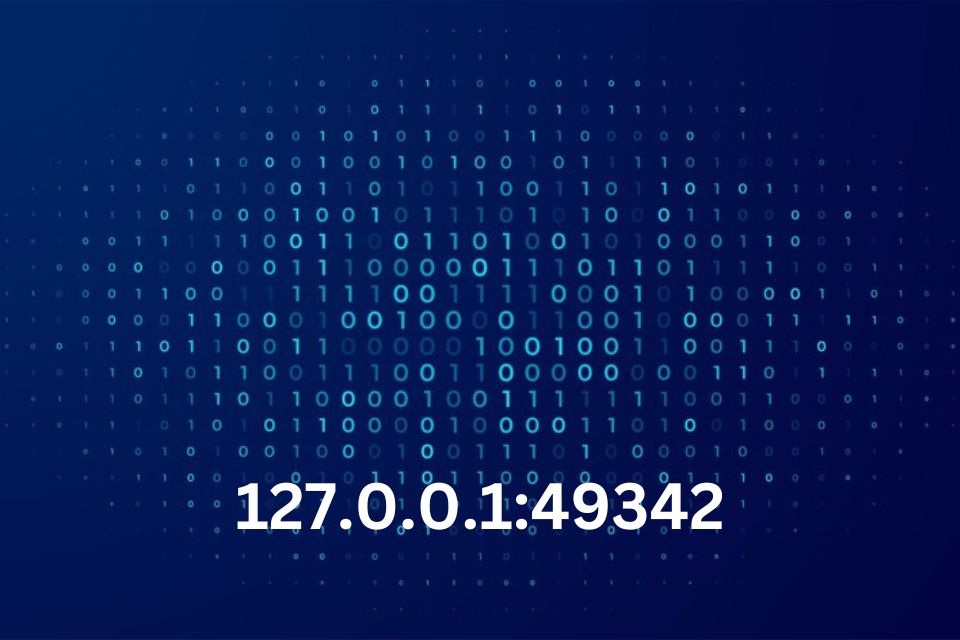
127.0.0.1:49342 Overview: Key Insights On Local IP Address & Port
- Tech
- 17 October 2024
In the world of networking and software development, certain technical terms play an essential role in ensuring smooth communication between devices and applications. One such term is “127.0.0.1:49342,” which may seem cryptic but holds great importance in local testing, debugging, and development processes. This IP address and port combination is a cornerstone for developers and system administrators, facilitating communication within a device without relying on external networks. In this article, we’ll explore the significance of 127.0.0.1:49342, its role in network operations, and why understanding it is vital for efficient software development and troubleshooting.
127.0.0.1:49342: A Localhost
127.0.0.1, also known as “localhost,” is a loopback IP address utilized by a device to communicate with itself. When an application or service uses 127.0.0.1, it operates internally without exiting the device. Localhost is essential for network diagnostics, software testing, and development environments, providing a secure environment for applications to execute and communicate. Combining 127.0.0.1 with port 49342 establishes a unique endpoint for internal communication, simplifying software testing and network configuration troubleshooting for developers. This also ensures that internal operations remain secure and separate from the wider internet by avoiding external network participation.
Port 49342
Ports, in networking, serve as gateways for data exchange between applications. Port 49342 is just one of thousands of available ports and is often used in software development environments for local testing.
Pairing port 49342 with the 127.0.0.1 IP address creates a local communication endpoint, which is especially useful when running applications or servers that require internal testing. It enables applications to listen for incoming data without having to rely on an external network, making it an essential tool for developers working with APIs, servers, or other network-dependent software.
Why Port 49342 Is Necessary?
Port 49342 provides flexibility for local communication between applications. Without ports, multiple applications would compete for the same communication channel, leading to conflicts and network errors. Port 49342 allows developers to test applications in isolation, ensuring that their software interacts properly with other components before being deployed to a live environment. This is particularly important in situations where developers need to simulate different network behaviors or test specific functionalities that depend on network communication.
How 127.0.0.1:49342 Is Important?
The combination of 127.0.0.1 and port 49342 is highly beneficial for testing and debugging purposes. It provides a local environment where developers can simulate real-world scenarios without impacting external users or systems. When developers run their applications using this address and port combination, they can detect and resolve issues in a controlled environment, ensuring smoother deployment when the software goes live.
In addition to testing, the localhost and port combination aids in network configuration. System administrators can use 127.0.0.1:49342 to configure and manage network settings for services like web servers, database servers, or custom applications, ensuring they run properly before opening them to the outside world.
Debugging & Testing With 127.0.0.1:49342
One of the primary uses of 127.0.0.1:49342 is debugging and testing applications. Localhost (127.0.0.1) is ideal for running test servers, mock environments, or application instances without the risk of affecting live environments. This allows developers to refine their code, test user interactions, and even simulate network issues.
With port 49342, developers can ensure that the communication pathways between their application components are working as expected. If an application isn’t functioning correctly, using this setup makes it easier to pinpoint the issue and determine whether it’s a server problem, a port conflict, or a software bug.
Resolving Network Issues
When network issues arise, developers and administrators often rely on 127.0.0.1:49342 for troubleshooting. This IP address and port combination allows them to isolate problems, such as blocked ports, misconfigured servers, or malfunctioning applications. By testing locally on 127.0.0.1:49342, they can verify whether the issue is network-related or confined to the system.
For example, if a web application is not responding correctly, running it on 127.0.0.1:49342 helps identify whether the problem is with the local setup or something external like a firewall or a server misconfiguration. This saves time and ensures the issue can be resolved without downtime.
Wrap Up
127.0.0.1:49342 is more than just an IP address and port combination; it is a fundamental tool for developers, system administrators, and network engineers. It allows for secure, efficient internal communication and is critical in testing, debugging, and troubleshooting. By understanding how to use 127.0.0.1:49342, professionals can better manage their applications and services, ensuring that their systems function smoothly before deployment. This simple but powerful address helps ensure that the internet’s backbone—its applications and networks—remains reliable and functional.
FAQs
What is the significance of 127.0.0.1?
127.0.0.1 is the loopback IP address, commonly called “localhost.” It allows a device to communicate with itself.
Why is port 49342 used?
Port 49342 is often used in development and testing environments, allowing internal communication between services and applications.
Can 127.0.0.1:49342 be accessed externally?
No, 127.0.0.1:49342 is for internal communication only. It cannot be accessed from external networks.
What are the common issues with 127.0.0.1:49342?
Common issues include port conflicts, misconfigured services, or network settings that prevent proper communication.



